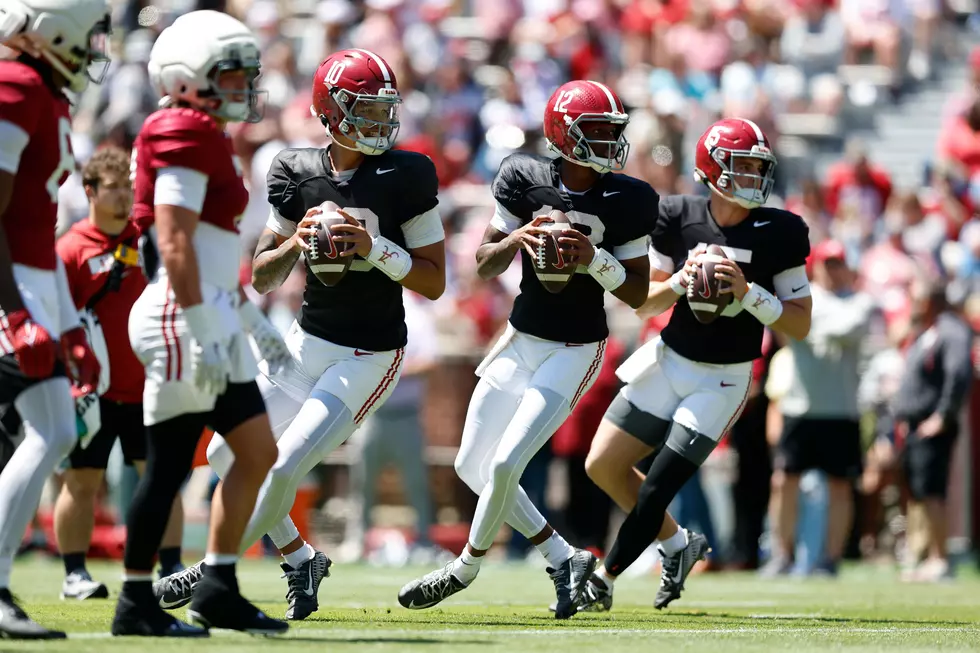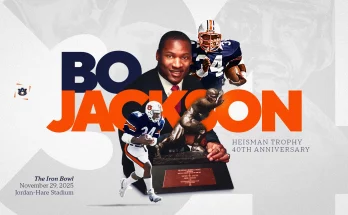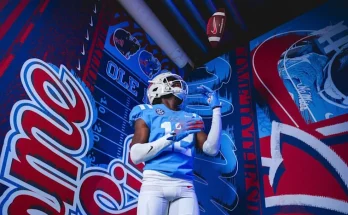Alabama lands a major win by flipping talented four-star quarterback from Iowa State, sending shockwaves through the college football recruiting landscape and reaffirming the Crimson Tide’s enduring pull even amid fierce competition. In a recruiting cycle already filled with drama, surprise commitments, and headline-grabbing flips, this move underscores Alabama’s relentless pursuit of elite talent and its readiness to shape the future under center with a quarterback who once looked destined to lead a different Power Five program.
The quarterback in question had been firmly committed to Iowa State, even building relationships with Cyclones coaches and teammates, publicly stating his excitement about the program’s trajectory and offensive system. His film displayed the type of dynamic playmaking ability that had schools across the country buzzing—quick feet, a live arm, and the poise of a seasoned field general despite his youth. At one point, he was considered the centerpiece of Iowa State’s future offensive strategy, someone who could have redefined the ceiling for that program. Yet Alabama, never content to settle when it comes to quarterback recruiting, stayed in contact and eventually swooped in with a pitch that was too compelling to ignore.
For Alabama, this flip is far more than just a symbolic victory. It’s a calculated move to ensure their quarterback room remains among the nation’s best, with depth, versatility, and future NFL-level talent. As quarterback battles intensify across the SEC, the Crimson Tide have been working diligently to stack their roster with playmakers capable of elevating the program in an increasingly competitive college football environment. Securing a top-10 quarterback in the class—especially one who already had a strong commitment elsewhere—speaks volumes about Alabama’s strategic recruiting prowess and long-term vision under new leadership.
This development also sends a clear message to the rest of the college football world: Alabama still gets who it wants. Even in an age where NIL deals, early playing time, and proximity to home play significant roles in decision-making, the Crimson Tide’s brand, infrastructure, and reputation for player development remain dominant forces. When Alabama sets its sights on a target, few programs have the muscle to resist.
From a technical perspective, the quarterback brings an arsenal of tools that make him a perfect fit for Alabama’s evolving offensive identity. His ability to extend plays outside the pocket, throw on the run, and make decisive reads in fast-paced scenarios aligns well with the modern schemes Alabama is installing. While he may not be expected to start immediately, his skill set gives him a legitimate chance to compete early, especially given how fluid quarterback competitions have become across the country.
This flip is also a testament to Alabama’s offensive staff and recruiting department, who executed the pivot with precision and tact. Knowing that the quarterback was already committed elsewhere, they had to walk a fine line—respecting the prior commitment while building a vision compelling enough to cause a reevaluation. It’s a dance that requires patience, authenticity, and strategic messaging, and Alabama performed it masterfully.
Meanwhile, for Iowa State, the loss is undeniably painful. In today’s recruiting climate, where verbal commitments are often subject to change, no program is immune to flips. However, losing a blue-chip quarterback this late in the cycle creates a ripple effect that can be difficult to recover from. Quarterbacks are often the face of recruiting classes—they attract other skill players, serve as leaders during offseason workouts, and are typically among the most heavily marketed athletes in future campaigns. Iowa State now faces the challenge of quickly identifying a replacement or turning to developmental prospects with less polish and upside.
For the quarterback himself, the move represents a significant shift in trajectory. Instead of arriving at a program where he would likely be the unquestioned starter in a year or two, he’s stepping into a highly competitive environment filled with other top-tier talents. But for competitors at his level, that’s often the appeal. Iron sharpens iron, and the path to the NFL is frequently forged through battles won in practice fields and film rooms, not just Saturday showcases. His decision signals that he’s ready for that challenge—that he sees Alabama not just as a college destination, but as a platform to elevate his game to the next level.
The ripple effects of this flip will likely stretch far beyond just Alabama and Iowa State. Other programs in pursuit of quarterbacks in this class now face a reshuffled deck. Schools that missed on this prospect initially may revisit other targets, triggering a chain reaction of quarterback evaluations and offers. The recruiting dominoes are always in motion, but a major quarterback flip like this has the power to accelerate changes in multiple programs’ plans.
The move also invites fresh conversation around the broader state of quarterback recruiting. With the transfer portal now a normalized part of roster building, schools are increasingly recruiting not only high school talent but also planning for potential additions or departures via the portal. This adds pressure to each recruiting class—quarterbacks must not only commit but also compete with an awareness that a more experienced player could enter the room at any time. For Alabama, the flip represents both an insurance policy and an investment in the future. For the quarterback, it’s an opportunity wrapped in pressure—one he clearly feels ready to embrace.
There’s also the NIL factor. While it remains unclear whether financial considerations played a role in this flip, the landscape has changed dramatically over the past two years. Top quarterbacks are commanding significant NIL valuations, and Alabama has one of the more sophisticated ecosystems for facilitating opportunities through collectives and alumni networks. If NIL was a consideration, Alabama likely had the infrastructure in place to offer both short- and long-term value, especially considering its consistent national exposure and elite alumni pipeline.
From the fan perspective, this move rejuvenates excitement around the future of Alabama football. Even in years where the program is undergoing changes or facing uncertainty, high-level commitments like this serve as morale boosters. They also stoke competitive fire among current players, as every addition raises the stakes and sets a tone of excellence.
For the quarterback’s family and inner circle, the flip is likely the result of extensive deliberation. These decisions are rarely made on a whim. They involve multiple visits, late-night calls with coaches, in-depth evaluations of academic and athletic fit, and long-term conversations about development, mentorship, and future visibility. That he chose Alabama over Iowa State, despite his previous commitment, speaks volumes about how persuasive Alabama’s case must have been.
As the early signing period inches closer, this flip adds drama to a cycle already rich with storylines. Alabama has once again proven that no commitment is truly safe when it decides to enter the conversation. The Crimson Tide’s recruiting machine continues to run at full speed, targeting not only high school phenoms but also navigating a landscape where timing, relationships, and vision are paramount.
In the end, this story is about more than one player changing schools. It’s a snapshot of the modern recruiting world—fluid, fast-paced, and filled with twists. Alabama’s ability to execute a late-stage flip of a quarterback once believed to be locked in elsewhere highlights both the program’s enduring allure and its adaptability in the face of an ever-shifting college football environment. The future under center in Tuscaloosa just got a lot more intriguing.



